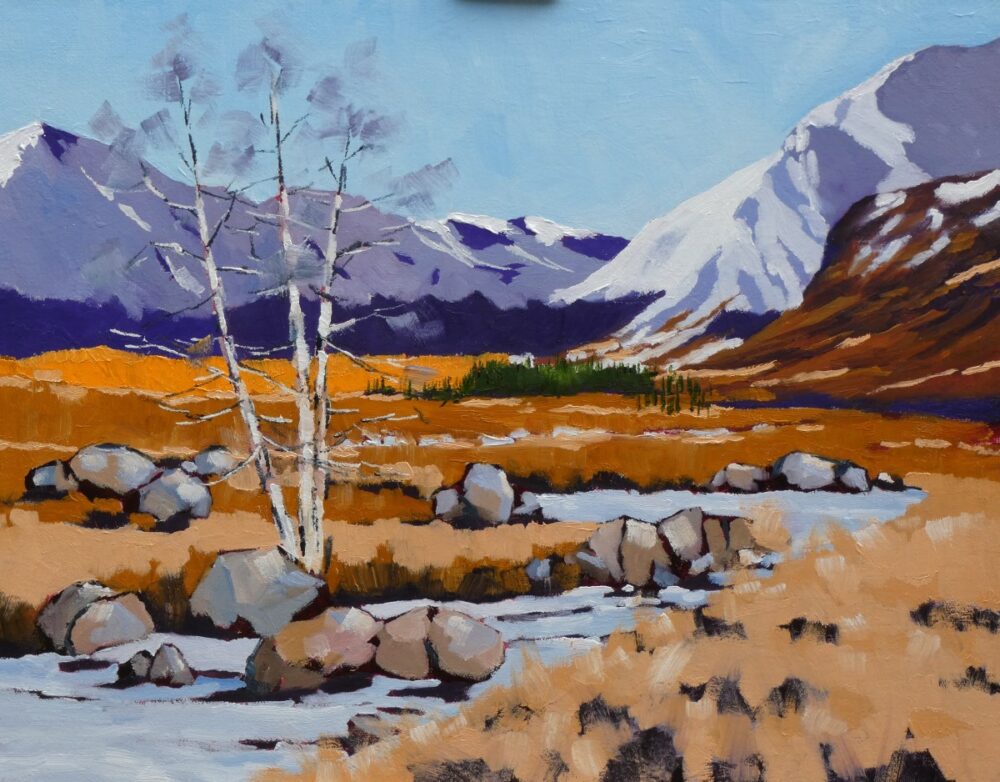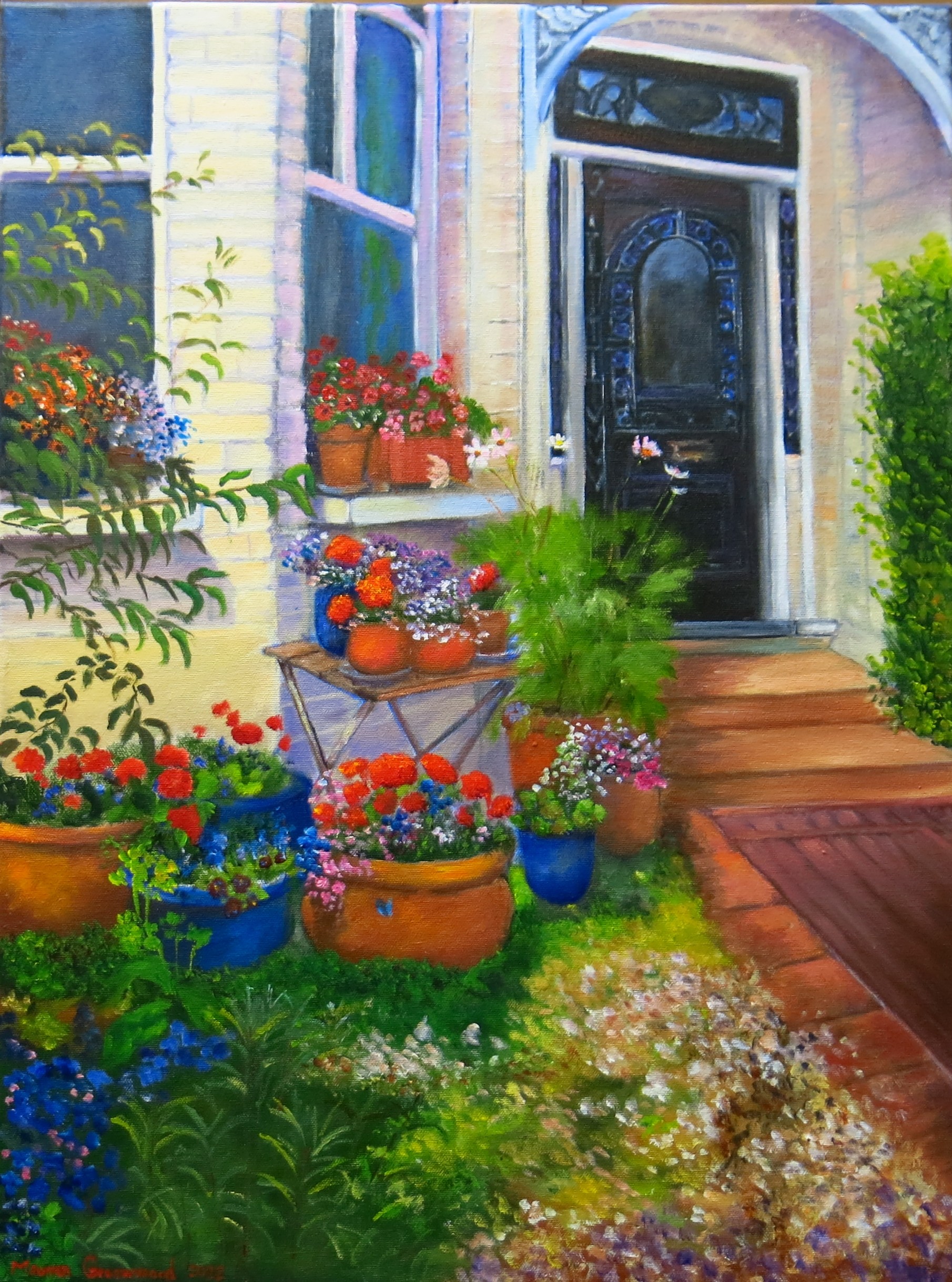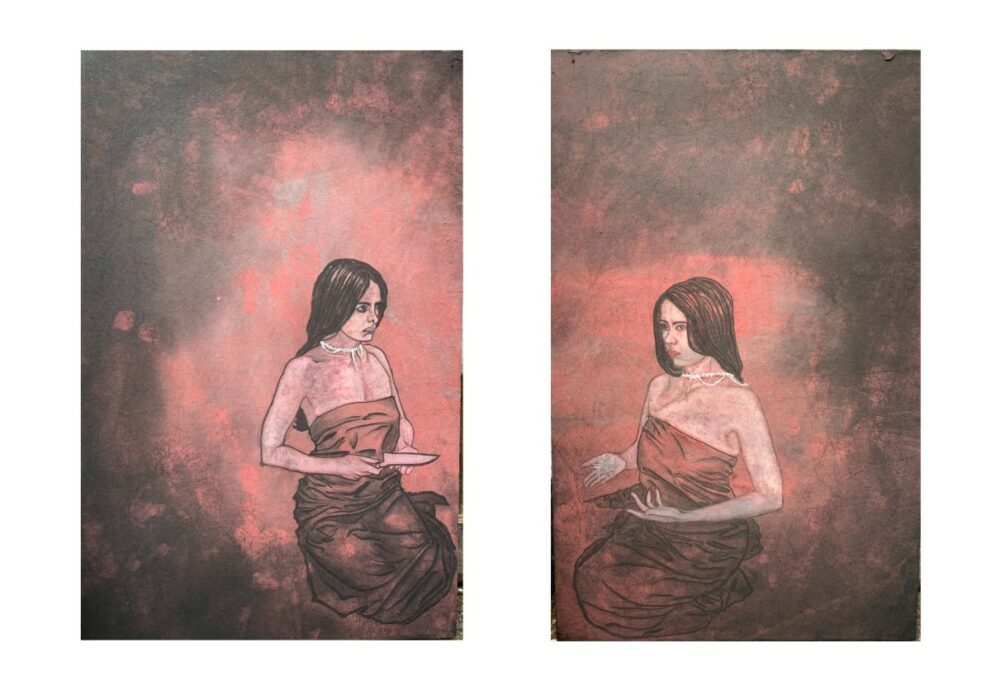Across Rannoch Moor by Andrew Stevens
In the realm where colours meld and emotions stir, Andrew Stevens’ masterpiece “Across Rannoch Moor” emerges as a captivating symphony of tones. Crafted with meticulous strokes of oil on canvas, this impressionist gem takes its viewers on a visual journey through the untouched beauty of Scotland’s Rannoch Moor. With a palette dominated by orange, brown, and blue-grey and purple hues, the painting weaves a mesmerising tapestry of nature’s quiet drama.
Andrews’ masterful command over colour becomes evident as one gazes upon the canvas. The harmonious blend of these earthy tones is no mere accident, but a deliberate arrangement that sets the mood for the entire piece. The orange, reminiscent of autumn’s embrace, takes centre stage, casting its warm glow across the landscape. It’s a hue that speaks of transition, of the earth preparing for its seasonal slumber.
In the delicate dance of brown and blue-grey, the artist conjures the untamed wilderness of Rannoch Moor. The brown strokes etch the rugged terrain, forming a textured foundation that roots the scene in raw reality. Meanwhile, the blue-grey purple undertones give life to the moor’s expanse, evoking a sense of distance and depth that beckons exploration.
But it’s the essence of the painting that truly captivates — the convergence of emptiness and majesty that defines the Scottish moorlands. As autumn’s first snows delicately crown the distant hills, a quietude envelops the scene. The emptiness isn’t void, but a canvas for imagination to run wild. It invites contemplation, allowing viewers to step into the untouched realm where nature reigns supreme. The majesty of the land isn’t in ostentatious grandeur, but in the whisper of wind across the moor, the hush of the first snowfall, and the stillness that fills the air.
Andrews’ deft hand as an impressionist painter captures not just the visual splendour of Rannoch Moor, but the emotions that swell within when faced with such untouched beauty. “Across Rannoch Moor” transcends pigment and canvas, evoking the spirit of Scotland’s wilderness and inviting all who gaze upon it to join in its serene contemplation.
VIEW ALL ARTWORKS BY ANDREW STEVENS
Questions to the Artist
What inspired you to choose Rannoch Moor as the subject of this painting? Is there a personal connection or a specific experience that motivated you?
For me, Rannoch Moor is both a magical place in itself and the prelude of what awaits the traveller who is heading north, as they cross Rannoch Moor and then pass into Glen Coe. The open, barren expanse of Rannoch Moor always lifts my heart and creates a sense of freedom and exhilaration. The magic may be simply its remoteness and the epic scale of an endless flatland of peat bog that stirs my emotions in a way that few places do. If I could grow wings, this is where I’d fly.
The colour palette you’ve used in “Across Rannoch Moor” is quite unique and evocative. Can you elaborate on how you selected the tones of orange, brown, and blue-grey to convey the essence of the scene?
When the bracken dies back it can take on a whole range of warm tones, from Naples Yellow to Burnt Sienna with many mid-tones between. These warm colours need to be contrasted with cool colours to make the painting sing or vibrate. I don’t worry too much about strictly following what I see before me, after all, the job of the artist is to create and build a picture. For example, the silver birch trees didn’t occur in the vista before me; I’d sketched them a mile or two further back and added them into my painting to create a vertical element. Similarly, although it doesn’t show up in the photo, some of the darker areas are purple, so it’s really about creating contrasts and allowing the viewer to make their own interpretations of what they see in the picture.
The balance between emptiness and majesty in the painting is striking. Could you share your thought process behind capturing this particular aspect of the Scottish landscape?
Scotland has the ability to make us feel very small and incredibly insignificant. It hasn’t changed for tens of thousands of years and I see it, walk it and paint it with a feeling of awe. You’ve asked about the balance of emptiness and majesty which in itself sums up Scotland and sometimes I have to adjust things in order for them to work as a painting. The scenery is just too big! So, in this painting, the mountains are not as high as they truly are because they were too overpowering and diminished the sense of emptiness in the middle distance.
The first autumn snows on the distant hills evoke a strong sense of seasonal transition. How do you believe this element adds to the overall narrative of the artwork?
We live in constant flux and seasonal changes are a part of the rhythm of nature and life. In my painting, snow was an essential element in telling the story…in other words, giving context. I’m always struggling to find balance in my work between giving too much information (which can make the image dull and uninteresting) or too little and leaving the viewer confused or lost. Autumn is full of colour, so in that sense there’s plenty of choice but it can also lead to a muddled image, which is why I tried to keep it fairly simple.
VIEW ALL ARTWORKS BY ANDREW STEVENS



